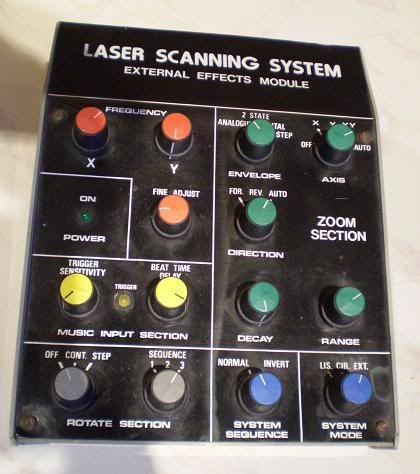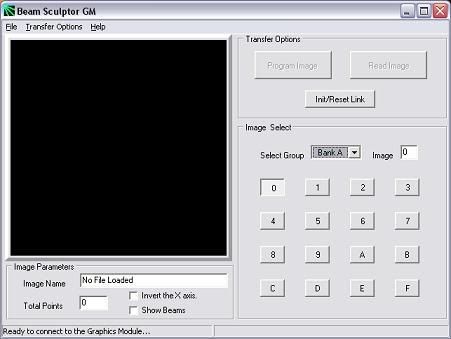No worries! The external effects controller was a bit pricey, so I was pleased to pick mine up second hand on ebay, along with a dead Hene lasertech projector (which is now in the loft somewhere, sporting a 100mw DPSS!

)

This unit does pretty much nothing until you feed it an audio signal, the two yellow knobs adjust the level, and beat delay, a rather handy function to help it pick out bass beats, or catch every second beat etc. Zooms and rotations are both triggered by the audio source.
The red knobs copy the sine wave generators on the original controller, but the fine adjust allows you to "lock" static images more easily.
The green knobs are the zoom section, the top two are switches that set the manner of the zoom ( ANALOGUE=smooth, 2 STATE=bounce between big and small, DIGITAL=stepped) and the axis to which it is applied (X, Y, X and Y and AUTO switches through the 3 options in turn) The DIRECTION knob set whether it zoomed up or down (AUTO alternated this) DECAY set the speed of the zoom, and RANGE how far it went.
The grey knobs control the rotation of the image, either OFF, CONT (continuous rotation) or STEP (on the beat) The sequence knob changed the direction.
I can't remember what the SYSTEM SEQUENCE switch did, but SYSTEM MODE set whether the unit produced Lissajous patterns or circles, or if it took a feed from an external source (The Graphics Module).

The Laptop was used with a piece of software called Beam Sculptor GM. This was used along with a hardware modification to the Graphics Module, which replaced the EPROM with a memory that could be loaded, via a serial cable, from the software. The software could load ILDA files (max 128 points) and also included a drawing and editing package.
I still have mine, and it all still works!

